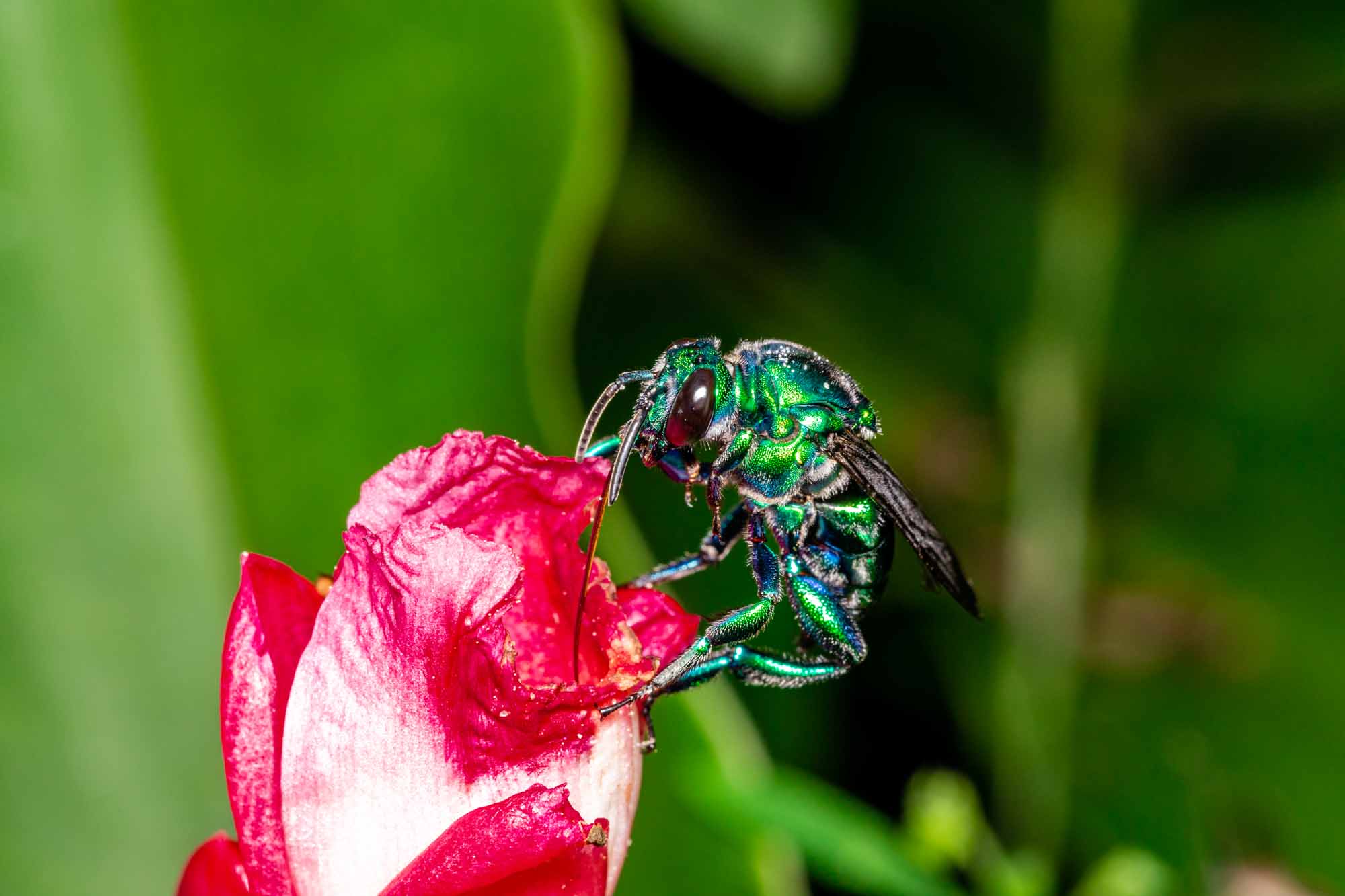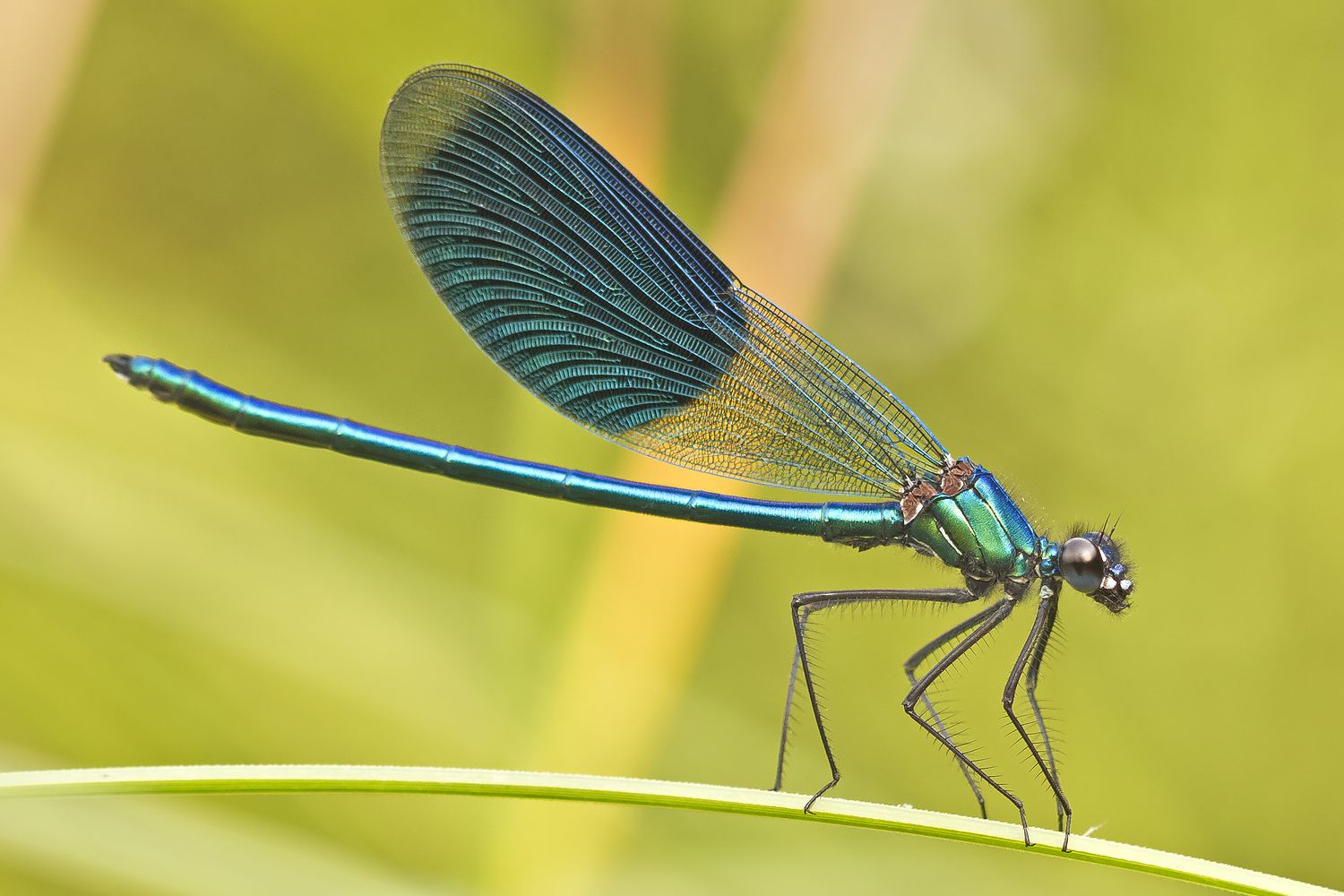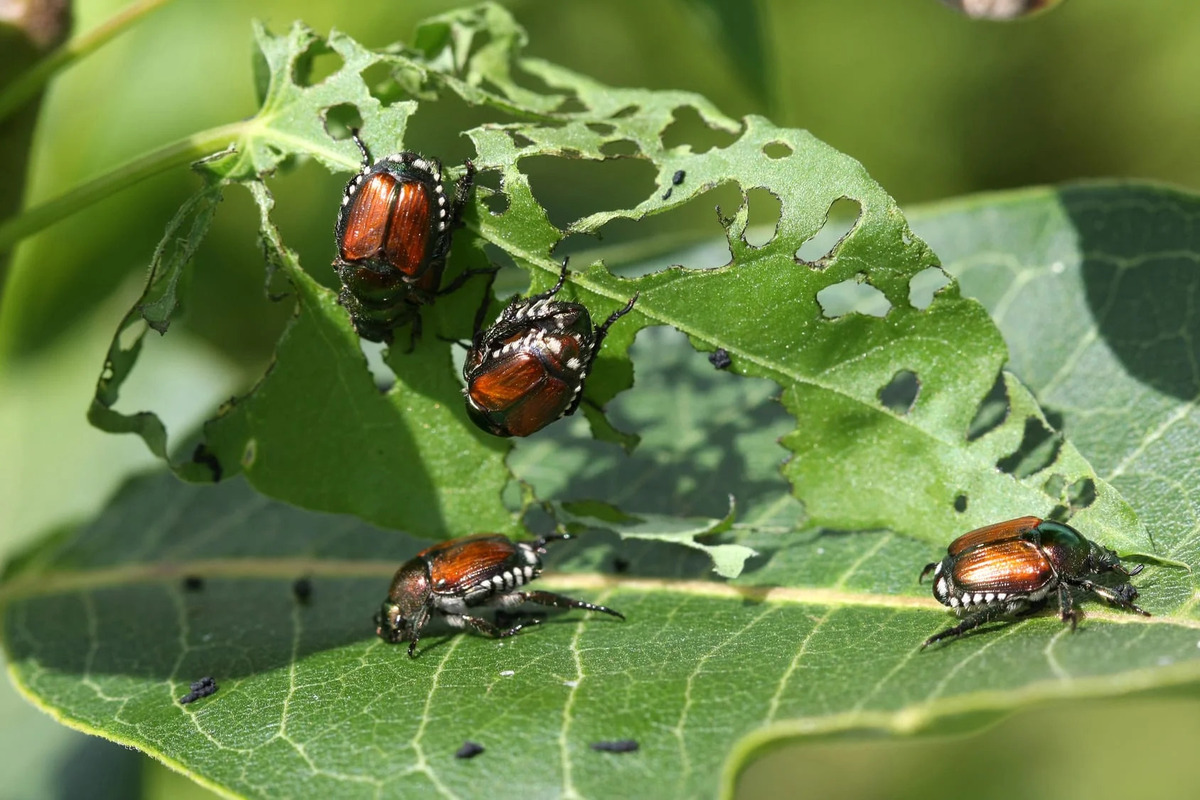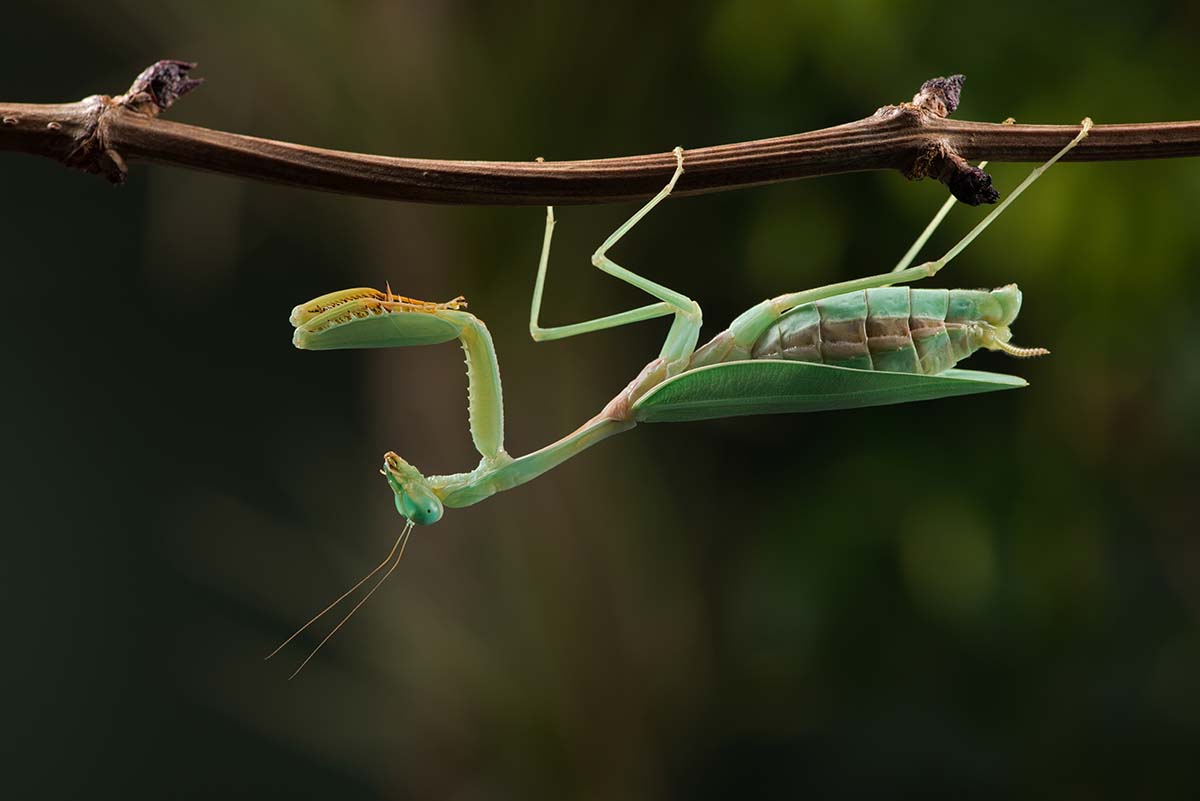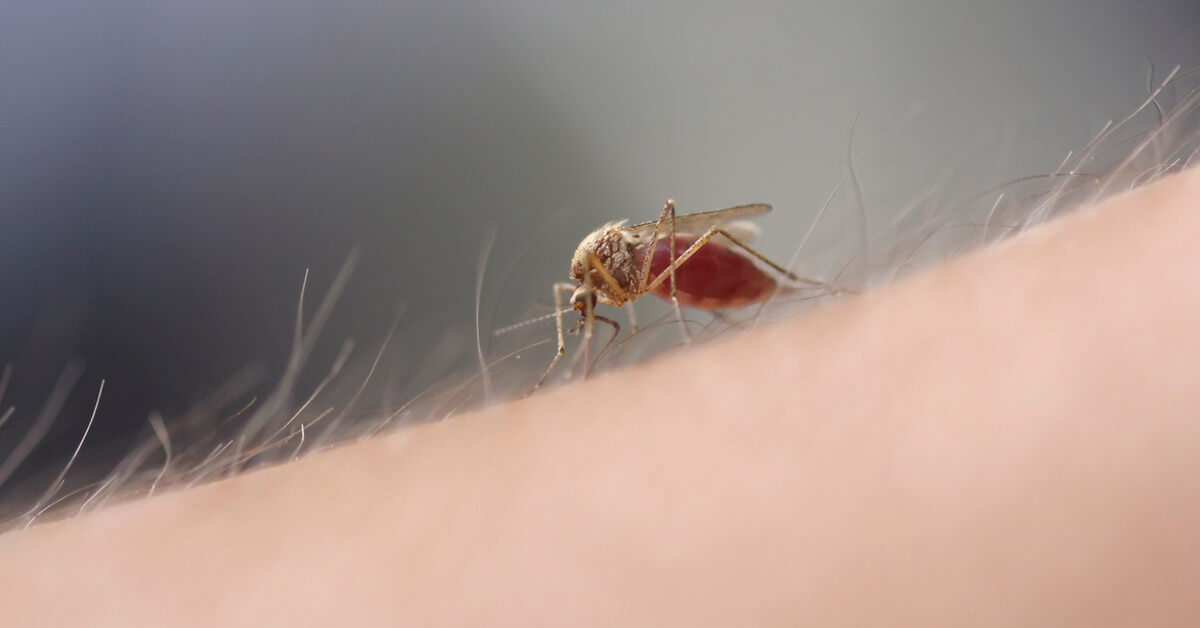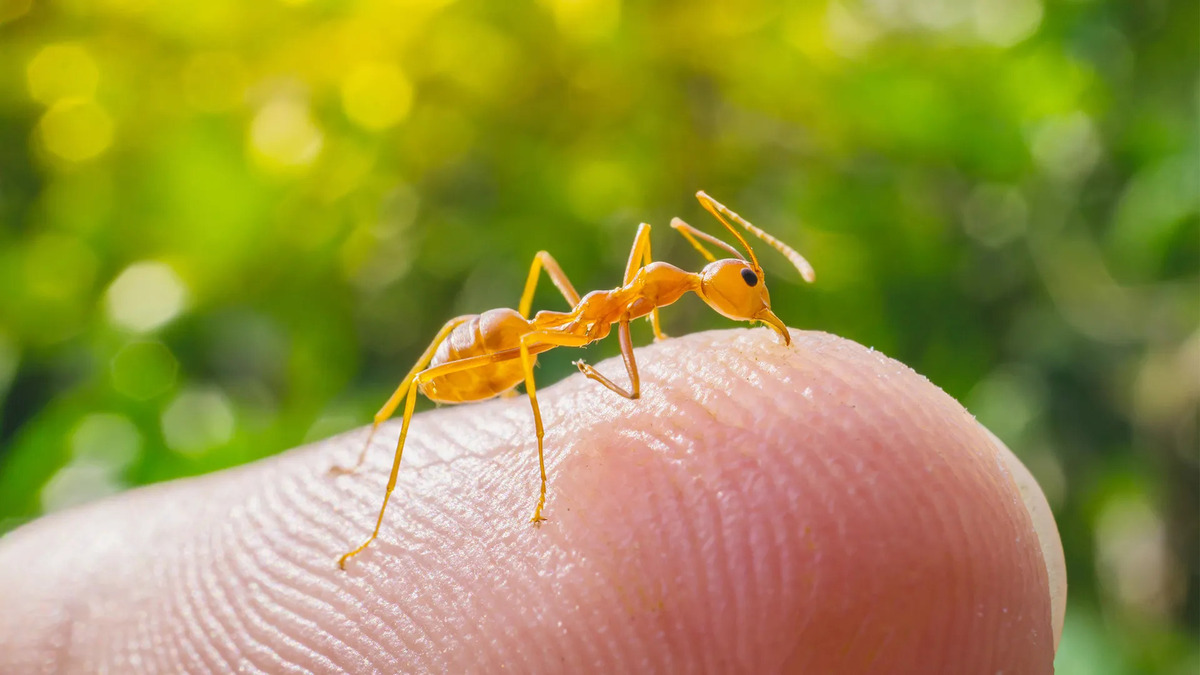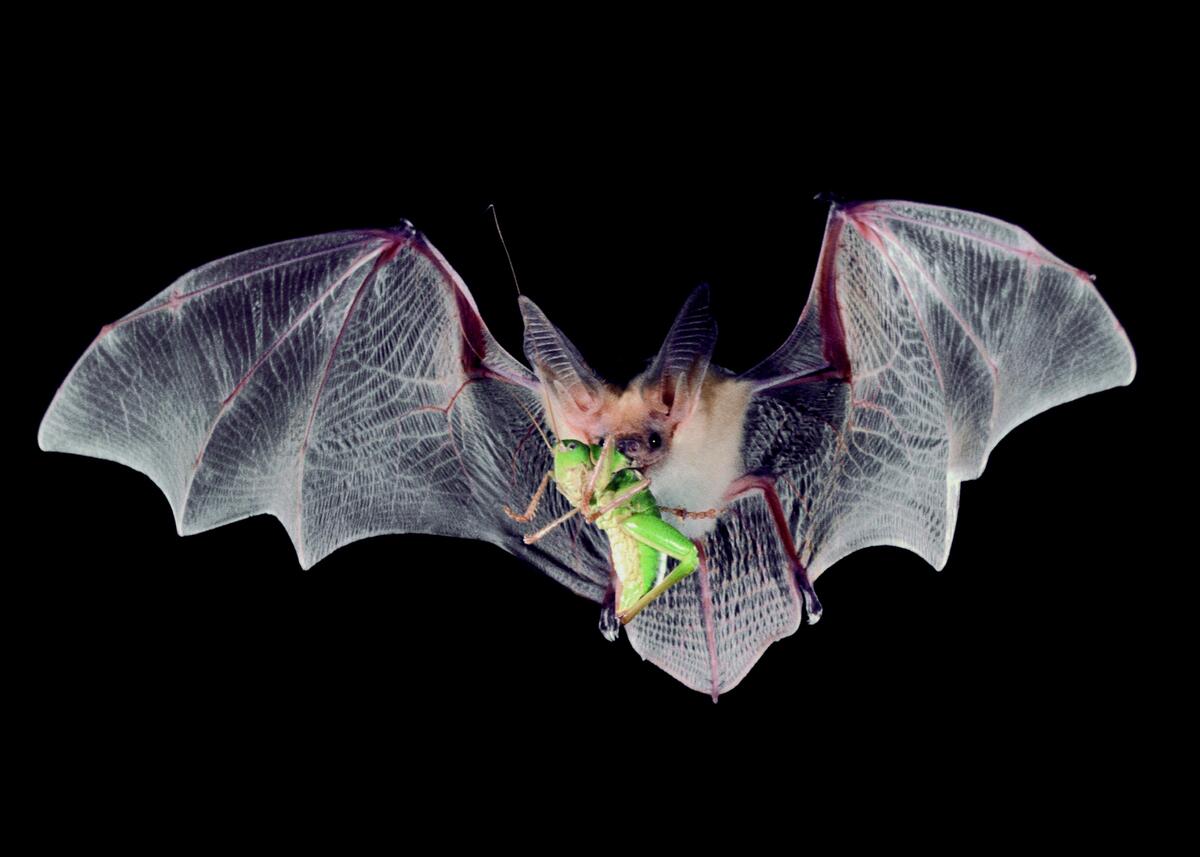Home>Gardening News and Trends>Latest News>How Many Different Types Of Insects Are There


Latest News
How Many Different Types Of Insects Are There
Modified: January 22, 2024
Discover the latest news on the vast variety of insects inhabiting our planet. Learn about the countless different types and fascinating characteristics of these remarkable creatures.
(Many of the links in this article redirect to a specific reviewed product. Your purchase of these products through affiliate links helps to generate commission for Chicagolandgardening.com, at no extra cost. Learn more)
Table of Contents
Introduction
Insects are the most diverse group of animals on Earth, with over a million known species and countless more yet to be discovered. From tiny ants to majestic butterflies, insects inhabit almost every ecosystem on the planet, playing vital roles in pollination, decomposition, and even as a source of food for other animals. Understanding the different types of insects and their characteristics is essential for scientists, enthusiasts, and anyone with a curious mind.
Classifying insects can be a complex task due to the vast number of species and their unique traits. However, scientists have developed various systems to categorize these incredible creatures, taking into account factors such as their habitat, feeding habits, reproduction, and physical characteristics.
In this article, we will delve into the fascinating world of insects, exploring the different types of insects based on these distinctive characteristics. We will also highlight some notable examples of insects that exemplify the diversity found within each category.
Whether hatching from eggs, undergoing metamorphosis, or possessing extraordinary camouflage, insects continue to amaze and captivate us with their incredible adaptability and complex behaviors. So, let’s embark on this entomological journey and discover the astonishing array of insect species that inhabit our planet.
Insect Classification
Classifying insects is a crucial task for scientists to understand their relationships, behaviors, and evolutionary history. Insect classification is based on a hierarchical system called taxonomy, which organizes living organisms into different categories based on their shared characteristics.
The classification of insects starts with the broadest category, the Kingdom Animalia, which encompasses all animals. Within the animal kingdom, insects belong to the phylum Arthropoda, which includes creatures that have jointed legs and an exoskeleton. Insects further belong to the class Insecta, which is the largest group within the arthropod phylum.
Insect taxonomy continues with the designation of orders, families, genera, and species, allowing scientists to identify and categorize specific insect species. The exact number of insect orders varies depending on different classification systems, with estimates ranging from 26 to 32 orders.
Each insect order represents a distinct group that shares certain physical traits and characteristics. Some common insect orders include:
- Lepidoptera: This order includes butterflies and moths, known for their beautiful wings and distinctive life cycle of metamorphosis.
- Hymenoptera: This order consists of bees, wasps, and ants, playing important roles in pollination, pest control, and social structures.
- Diptera: Commonly known as flies, this order includes various species that have only two wings, such as houseflies and mosquitoes.
- Coleoptera: This is the order of beetles, which make up the largest group of insects and are known for their hardened front wings called elytra.
- Orthoptera: This order includes grasshoppers, crickets, and locusts, characterized by their powerful hind legs and ability to produce chirping sounds.
These are just a few examples of the many insect orders that exist, each with its own unique characteristics and adaptations. Proper classification helps scientists understand the evolutionary relationships among species and provides a framework for studying their biology, behavior, and ecological roles.
Orders of Insects
Insects encompass a wide range of orders, each with its own unique characteristics and adaptations. Let’s explore some of the most common and notable insect orders:
Lepidoptera: The order Lepidoptera includes butterflies and moths. These insects are known for their distinct lifecycle, starting as caterpillars and transforming into beautiful flying adults. Lepidoptera are typically characterized by their scale-covered wings and long proboscis, which they use to feed on nectar from flowers.
Hymenoptera: Hymenoptera includes well-known insects like bees, wasps, and ants. These insects play essential roles in pollination, pest control, and maintaining ecological balance. Bees are primary pollinators, responsible for the cross-pollination of many plants. Wasps are known for their stinging ability and often act as predators or parasitoids. Ants are highly organized social insects that build intricate colonies and have specialized roles within their societies.
Diptera: Diptera, commonly referred to as flies, are distinctive for having only two wings. Flies are incredibly diverse and can be found in various habitats worldwide. Mosquitoes, houseflies, and fruit flies are some well-known examples. Mosquitoes feed on the blood of animals, while houseflies are attracted to decaying organic matter. Fruit flies are often considered pests in homes and can be found around ripe fruit or fermenting food.
Coleoptera: The order Coleoptera is the largest group of insects, encompassing beetles. Beetles have hardened front wings called elytra that protect their hind wings when not in use. With such a vast number of species, beetles can be found in almost every habitat on Earth. Some examples include ladybugs, fireflies, and scarab beetles.
Orthoptera: Orthoptera includes grasshoppers, crickets, and locusts. These insects are easily recognizable by their strong hind legs, adapted for hopping and jumping. Grasshoppers and crickets produce sound by rubbing their wings together, creating a distinct chirping noise that is often associated with summer nights.
Other Orders: In addition to the above, there are several other insect orders worth mentioning. These include Hemiptera (true bugs), Odonata (dragonflies and damselflies), and Isoptera (termites). Each order has its own unique characteristics and ecological roles.
These are just a few examples of the diverse and fascinating insect orders that exist. Each order plays a vital role in their respective ecosystems and exhibits remarkable adaptations for survival.
Types of Insects Based on Habitat
Insects have adapted to a wide array of habitats and can be found in almost every corner of the world. Their ability to thrive in diverse environments is a testament to their remarkable adaptability. Let’s explore some of the types of insects based on their habitat:
Aquatic Insects: Aquatic insects are those that spend a significant portion of their life cycle in water. They have evolved various adaptations to survive and thrive in aquatic environments. Examples of aquatic insects include mayflies, dragonflies, damselflies, caddisflies, and water beetles. These insects have specialized body structures and behaviors that enable them to move, feed, and reproduce in water bodies such as lakes, rivers, and ponds.
Terrestrial Insects: Terrestrial insects are the most common type of insects found on land. They inhabit diverse terrestrial habitats, including forests, grasslands, deserts, and urban areas. Terrestrial insects include butterflies, bees, ants, beetles, grasshoppers, and many others. These insects have evolved specific adaptations to navigate and survive in their respective environments.
Burrowing Insects: Burrowing insects are specialized for living underground. They burrow into soil or other substrates to create nests, tunnels, or chambers for shelter and reproduction. Some examples of burrowing insects are cicadas, mole crickets, and ants. These insects have modified mouthparts and strong limbs that enable them to dig through the ground and create intricate underground systems.
Canopy Insects: Canopy insects are adapted to live in the upper layers of forest canopies. They include various species of beetles, butterflies, ants, and spiders. These insects have developed unique adaptations, such as strong grasping legs, wings with specialized patterns and colors for camouflage, and elongated mouthparts for nectar feeding. Canopy insects play important ecological roles, including pollination and herbivory, within the forest ecosystem.
Cave Insects: Cave insects are specially adapted to live in dark and often isolated cave environments. These insects have evolved unique features such as elongated appendages, reduced eyes or complete blindness, and pale coloration. Cave crickets, cave beetles, and cave spiders are examples of insects found in cave ecosystems. They rely on other sensory organs such as antennae and elongated legs to navigate and find food in the darkness.
Parasitic Insects: Parasitic insects, as the name suggests, live and feed on the bodies of other organisms. They can be found in a wide range of habitats, including the bodies of animals, plants, and even other insects. Examples of parasitic insects include fleas, lice, ticks, and certain species of wasps. These insects have evolved adaptations to attach themselves to their hosts, feed on their blood or tissues, and complete their life cycles.
These are just a few examples of the types of insects based on their habitats. Each habitat presents unique challenges and opportunities, and insects have evolved remarkable adaptations to survive and thrive in their respective environments.
Types of Insects Based on Feeding Habits
Insects exhibit a wide range of feeding habits, reflecting their diverse ecological roles and adaptations. From herbivores to carnivores, let’s explore some of the types of insects based on their feeding habits:
Herbivorous Insects: Herbivorous insects feed primarily on plant material. This group includes species like caterpillars, grasshoppers, and beetles that consume leaves, stems, flowers, fruits, or tree sap. Some herbivorous insects have evolved specialized mouthparts, such as elongated proboscis in butterflies and piercing-sucking mouthparts in aphids, to obtain nutrients directly from plants. These insects play important roles in pollination and have complex interactions with the plants they feed on.
Carnivorous Insects: Carnivorous insects are predators that feed exclusively or partially on other animals. Some examples include praying mantises, spiders, assassin bugs, and robber flies. Carnivorous insects have adapted various hunting strategies, such as ambush predation or active pursuit, to capture their prey. They play an essential role in controlling pest populations and maintaining ecological balance within their habitats.
Omnivorous Insects: Omnivorous insects have a more flexible diet, consuming both plant and animal materials. These insects can switch between plant-based foods and small insects or decaying organic matter, depending on availability. Examples of omnivorous insects include some species of ants, beetles, and flies. Their adaptable feeding habits allow them to survive in diverse environments and take advantage of different food sources.
Sap-Sucking Insects: Sap-sucking insects, such as aphids, leafhoppers, and scale insects, extract nutrients by piercing plant tissues and feeding on the sap. They use specialized mouthparts known as stylets to penetrate plant cells and access the sugary fluids. Some sap-sucking insects can cause damage to plants by transmitting diseases or depleting their sap resources.
Scavenging Insects: Scavenging insects are opportunistic feeders that consume decaying organic matter. They play a crucial role in the decomposition process by breaking down dead plants and animals, recycling nutrients back into the ecosystem. Examples of scavenging insects include dung beetles, carrion beetles, and some species of flies.
Parasitic Insects: Parasitic insects rely on other organisms for their survival and nutrition. They can be classified into two main groups – ectoparasites and endoparasites. Ectoparasites, such as fleas and lice, live on the exterior of their hosts, feeding on their blood or outer tissues. Endoparasites, like parasitic wasps and flies, lay their eggs inside other organisms, and the larvae feed on the host’s internal tissues. These parasitic insects have complex life cycles and adaptations to ensure the success of their reproductive strategies.
These are just a few examples of the types of insects based on their feeding habits. Their diverse feeding strategies contribute to the balance and functioning of ecosystems, showcasing the intricate web of interactions within the natural world.
Types of Insects Based on Reproduction
Insects exhibit diverse reproductive strategies, each adapted to their specific environments and lifestyles. Let’s explore some of the types of insects based on their reproductive methods:
Sexual Reproduction: The vast majority of insects reproduce sexually, with distinct male and female individuals. Sexual reproduction involves the fusion of sperm and egg cells, resulting in genetic diversity among offspring. Male insects typically possess specialized reproductive organs, such as claspers or copulatory structures, to transfer sperm to the female. Examples of sexually reproducing insects include butterflies, bees, flies, and beetles.
Parthenogenesis: Parthenogenesis is a form of asexual reproduction that occurs in some insect species. In parthenogenesis, females are capable of producing offspring without mating with males. This process involves the development of unfertilized eggs into new individuals. The resulting offspring are typically genetic clones of the mother. Aphids and some species of ants and bees are known to reproduce through parthenogenesis under certain conditions.
Haplodiploidy: Haplodiploidy is a unique reproductive system found in some insect groups, predominantly in the order Hymenoptera, including bees, wasps, and ants. In this system, fertilized eggs develop into females and unfertilized eggs develop into males. This results in haploid males carrying half the number of chromosomes compared to females. This reproductive mechanism increases the genetic relatedness among sisters and can influence social behavior within the colony.
Oviparity: Oviparity is the most common method of insect reproduction, involving the laying of eggs. Female insects deposit eggs, often in specific locations or on suitable hosts for their offspring. The development of the young occurs externally, and the eggs may undergo various stages of dormancy or development until hatching. Many insects, such as butterflies, beetles, and moths, reproduce through oviparity.
ovoviviparity: In ovoviviparity, female insects retain the eggs inside their body until they hatch, giving birth to live young. The eggs remain in protective structures or specialized pouches until hatching. This reproductive strategy provides additional protection and allows the parent to care for the developing offspring. Some species of cockroaches, walking sticks, and parasitic wasps reproduce through ovoviviparity.
Parental Care: Certain insects exhibit parental care behavior, where the parent(s) provide care and protection to the eggs or offspring. This care can range from guarding the eggs to provisioning food and shelter for the young. Examples of insects that practice parental care include some species of beetles, katydids, and true bugs. This behavior increases the chances of offspring survival and ensures a higher level of fitness.
These are just a few examples of the types of insects based on their reproductive strategies. The diversity in insect reproduction reflects the variety of ecological niches they occupy and represents remarkable adaptations to enhance their species’ survival and success.
Types of Insects Based on Physical Characteristics
Insects exhibit a remarkable array of physical characteristics that allow them to thrive in diverse habitats and fulfill their ecological roles. Let’s explore some of the types of insects based on their physical attributes:
Wings: One distinguishing feature of insects is their ability to fly, facilitated by the presence of wings. Insects are the only invertebrates capable of sustained flight. However, not all insects have wings. Some insects, like beetles, have hard outer wings called elytra that protect the delicate hind wings. Others, like ants and fleas, have completely lost their wings, relying on other means of mobility.
Mouthparts: Insects possess a wide variety of mouthparts adapted to their feeding habits. Some have chewing mouthparts, such as caterpillars and grasshoppers, which allow them to consume plant material. Other insects, like butterflies and moths, have a long coiled proboscis for sipping nectar. Mosquitoes and ticks use piercing-sucking mouthparts to extract blood from hosts, while bees have elongated tongues for sipping nectar from flowers.
Physical Defense: Many insects have evolved physical defenses to protect themselves from predators. Some insects, such as beetles and stink bugs, have hard exoskeletons that provide protection. Other insects have evolved camouflage, blending in with their surroundings to avoid detection. Certain species, like bees and wasps, have stingers that they use to defend themselves when threatened.
Mimicry: Insects exhibit various forms of mimicry to gain an advantage, either for protection or to deceive prey or predators. For example, some harmless insects mimic the appearance of toxic or venomous species to deter predators, a phenomenon known as Batesian mimicry. Insects can also engage in Müllerian mimicry, where multiple harmful species evolve similar warning signals to reinforce their shared defense mechanisms.
Specialized Appendages: Insects have a remarkable range of specialized appendages that aid in various functions. For example, grasshoppers and crickets have pronounced hind legs adapted for jumping, while praying mantises have raptorial forelegs for capturing prey. Other insects, such as dragonflies, have long and slender abdomens that aid in flight stability, while water striders have elongated legs that allow them to “walk” on the surface of water.
Metamorphosis: Many insects undergo metamorphosis, a process of profound physical and structural change as they transition from one life stage to another. This transformation enables insects to occupy different ecological niches and maximize their chances of survival. Common forms of metamorphosis include complete metamorphosis (as in butterflies and beetles) and incomplete metamorphosis (as in grasshoppers and dragonflies).
These examples highlight the incredible physical diversity among insects, showcasing their adaptations to different habitats, feeding habits, and survival strategies. From wings and mouthparts to specialized defenses and metamorphosis, the physical characteristics of insects are a testament to their evolutionary success and ecological significance.
Notable Examples of Insects
The insect world is full of fascinating and diverse species, each with its own unique characteristics and ecological significance. Let’s explore some notable examples of insects that captivate our attention:
Monarch Butterfly: The Monarch butterfly (Danaus plexippus) is famous for its long-distance migration. These majestic creatures undertake an incredible journey, traveling thousands of miles from Canada and the United States to Mexico. The vibrant orange and black pattern of their wings make them easily recognizable. Monarchs are also well-known for their remarkable life cycle, undergoing metamorphosis from eggs to caterpillars, then to chrysalises, and finally emerging as beautiful butterflies.
Honey Bee: Honey bees (Apis mellifera) are an essential component of our ecosystems and agricultural systems. They are known for their complex social structures and the production of honey. Honey bees play a crucial role in pollinating a wide variety of flowering plants, including many crops that humans depend on for food. Their intricate dance language, which communicates the location of nectar sources, is a marvel of communication and cooperation within their colonies.
Praying Mantis: Praying mantises (order Mantodea) are fascinating insects known for their unique forelimbs that resemble folded hands in prayer. These ambush predators have excellent vision and lightning-fast reflexes, allowing them to snatch their prey with precision. Praying mantises are known for their cryptic coloration, blending seamlessly into their environment to wait patiently for unsuspecting insects to come within striking distance.
Firefly: Fireflies, also known as lightning bugs, are a beloved sight on warm summer nights. These bioluminescent beetles produce light through a chemical reaction in their abdomen to attract mates or prey. Fireflies are known for their mesmerizing light displays, with each species having its unique flashing pattern. The synchronization of fireflies’ flashing light is a fascinating example of natural coordination and communication within a population.
Tarantula: Tarantulas are large, hairy spiders belonging to the family Theraphosidae. These arachnids are found in various parts of the world and have become popular in the pet trade. Despite their intimidating appearance, most tarantulas are docile and relatively harmless to humans. Tarantulas are known for their fascinating courtship rituals and unique defensive mechanisms, such as flicking urticating hairs or using their fangs to deliver venomous bites to subdue prey.
Atlas Moth: The Atlas Moth (Attacus atlas) holds the title for the largest wing surface area among all moth species. Native to Southeast Asia, these moths are known for their striking wing patterns, featuring intricate designs and rich colors. Female Atlas Moths have a wingspan of up to 25 centimeters, making them a spectacle to behold. Despite their large size, adult Atlas Moths have a relatively short lifespan as their sole purpose is reproduction.
Tsetse Fly: The Tsetse Fly (Glossina spp.) is an insect known for its role as a carrier of trypanosomes, parasites responsible for causing deadly diseases such as African sleeping sickness. These blood-feeding flies are found in sub-Saharan Africa and have a significant impact on human and livestock health. Controlling tsetse flies is crucial for preventing the spread of these devastating diseases.
These are just a few examples of the incredible diversity found within the insect world. From their astonishing life cycles and unique adaptations to their ecological roles and interactions, insects continue to captivate us with their beauty, biological wonders, and immense importance within our natural ecosystems.
Conclusion
The world of insects is a fascinating and diverse realm, captivating our imagination with their incredible adaptations, behaviors, and ecological roles. From the smallest ants to the majestic butterflies, insects inhabit nearly every habitat on Earth, playing vital roles in pollination, decomposition, and maintaining ecological balance. Understanding the different types of insects based on their characteristics helps scientists and enthusiasts gain insights into their biology, behavior, and evolutionary history.
Insect classification reveals the intricate relationships among species and provides a framework for studying their diversity. Through various orders like Lepidoptera, Hymenoptera, Diptera, and Coleoptera, we gain a glimpse into the vast insect world and the unique traits that define each group. Herbs on land or aquatic habitats, burrowing underground or soaring through the air, insects have adapted to a wide range of habitats, showcasing their remarkable resilience and resourcefulness.
The feeding habits of insects vary widely, from herbivory to carnivory and everything in between. These diverse feeding strategies contribute to the intricate balance of ecosystems and demonstrate the complex web of interactions among insects, plants, and other organisms.
Reproduction in insects is equally diverse, with sexual reproduction being the most prevalent, complemented by parthenogenesis, haplodiploidy, oviparity, ovoviviparity, and even parental care. These different reproductive strategies allow insects to adapt to specific environmental conditions, optimize their fitness, and ensure the survival of their species.
The physical characteristics of insects are astonishing, showcasing evolutionary marvels such as wings for flight, specialized mouthparts for feeding, unique defense mechanisms, camouflage, and intricate appendages for various functions. These traits highlight the adaptability, ingenuity, and diversity of insects across their vast array of species.
Notable examples of insects, such as the Monarch butterfly, honey bee, praying mantis, and firefly, captivate our attention with their unique features, behaviors, and ecological significance. They serve as reminders of the wonder and beauty found in the insect world, inspiring us to appreciate and conserve these vital creatures.
In conclusion, insects are an integral part of our natural world, contributing to the functioning of ecosystems and providing us with valuable insights into the wonders of evolution and biodiversity. By continuing to study and appreciate the different types of insects and their remarkable qualities, we gain a deeper understanding of the intricate workings of our planet and the importance of preserving these remarkable creatures for future generations.

